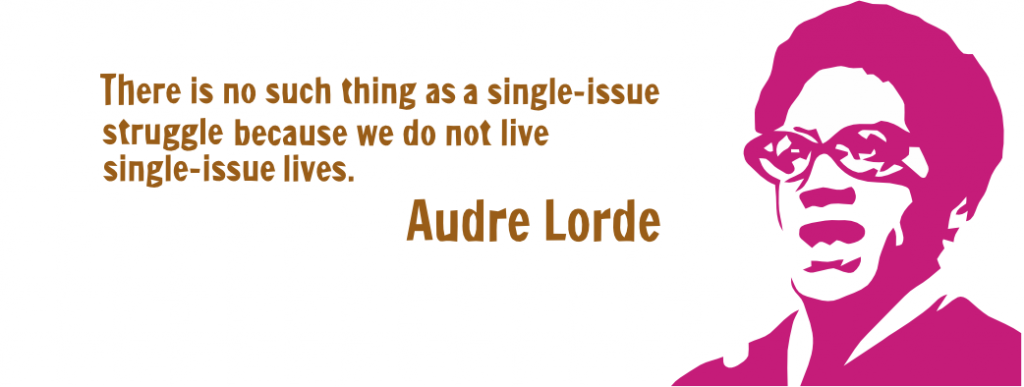Critical Race Theory and Intersectionality

One of this week’s assigned readings was ‘Intersectionality’ by Patricia Hill Collins and Sirma Bilge. This article focuses on how intersectionality can be used as an analytical tool. Importantly, the beginning of the article notes that “intersectionality as an analytical tool is neither confined to nations of North America and Europe nor is it a new phenomenon. People in the Global South have used intersectionality as an analytic tool, often without naming it as such.” The article goes on to describe the various ways intersectionality can be applied to understand different social/political situations. For example, the article applies intersectionality to analyze the 2014 FIFA World Cup, the global social inequity social problem, and the black Brazilian feminist social movement. The authors find that when people use intersectionality as an analytic tool, six core ideas appear: “inequality, relationally, power, social context, complexity, and social justice.”
Prior to reading this article, I was familiar with the concept of intersectionality (having taken a fair amount of Women’s and Gender Studies courses at CapU over the last 4 years). I understood intersectionality as a concept integral for the holistic understanding of a particular issue by way of analyzing how the particular issue affects different classes, races, genders, ethnicities, sexualities, and abilities. E.g., If you are approaching a problem or scenario without investigating how this scenario affects different intersections of experience, you cannot wholly understand the problem. This article reflected my understanding of intersectionality and increased my awareness of how important and useful intersectionality is as an analytical tool. Coming from a Women’s and Gender Studies student perspective, I think that it is ignorant not to apply intersectionality when undertaking research projects. Reflecting this belief, since learning about intersectionality (in 2014), I have sought to incorporate intersectionality into my research endeavours wherever possible. For example, when given the liberty of choosing my own research paper topics, some of the topics I have investigated are: black and gay masculinity (focusing on how race affects the homosexual experience among gay American males), how climate change will affect Vancouver with a focus on how Indigenous peoples interpret and experience climate change, and recently, on a paper about the asexual experience (for this class), I incorporated a discussion on how peoples with disabilities are affected by and or experience asexuality.
Intersectionality is important in all scholarly (and non-) pursuits for understanding a problem thoroughly. This applies to Queer Theory studies and beyond.